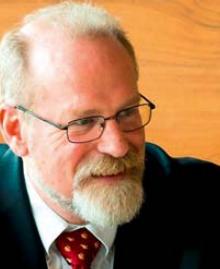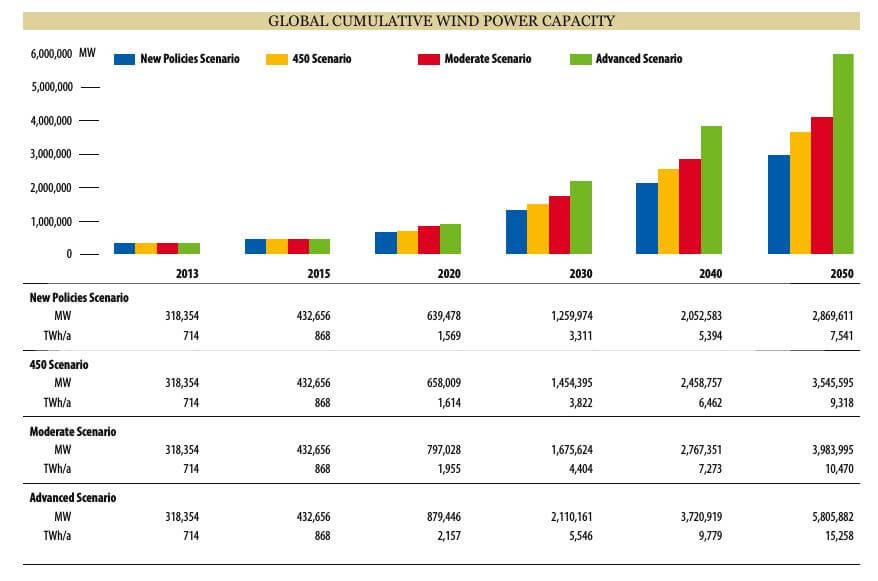News Release from windfair.net
Wind Industry Profile of
GWEC Global Wind Energy Outlook: Lots of light, but also lots of shadows
Thus, in retrospect to the year 2015, there are many positive things to report: wind energy has now become mainstream and finished again on a high note. More than 63 gigawatts were installed worldwide last year, which now means a total output of 433 GW – an increase of 17% compared to the previous year. Wind energy is now present in more than 80 countries around the world and increasing. In Jordan and Guatemala, the first commercial wind farms were put into operation in 2015.
In more than 28 countries already more than 1GW is installed, in 10 countries even more than 10GW. China leads this list with 145.362 GW followed by the US (74.471 GW). Germany is ranked 3rd with 44.947GW, followed by India, Spain, Canada and France. For the first time Brazil was able to push into this ‘club of 10GW’ once again proving the great traction of the South American market.
The experts expect growth in all regions in the future, but predict a slowdown in the market development for some countries. This includes China, where a lack of grid access is likely to create problems in the coming year. In the past, this has repeatedly led to delays in the commissioning of wind farm there, but arrangements of the government had temporarily led to an interim improvement in grid expansion.
The second largest wind market in the world is the US which is still building wind farms diligently. As a result of the last time PTC extention for the coming five years, the United States is currently experiencing the longest phase of political stability for the wind market which will likely create a boom in the coming years.
On the other hand, the view towards Europe appears to be more worrying, because there the expansion will slow down further. In several countries the political framework has changed – not always in favor of wind energy. However, the offshore sector is also adding to the European figures which saw another boom in 2015. At the end of the year, the European market reported 91% of market share, spread over only 11 European countries, including the United Kingdom with more than 40% of installed capacity, followed by Germany with 27%.
Outside Europe, the offshore market is finally gaining momentum. In Asia, the Chinese have reached a share of 8.4% on the world market. Several countries such as Japan, Thailand and India have recently entered the market or will do so soon. The US has also installed the first offshore turbine this summer, but it remains to be seen in many places how the offshore market will develop, as much depends on the development of floating turbines.
The study is only able to take technological developments into consideration to a very small amount as there are too many possibilities for unpredictable developments. For this reason, various scenarios have been proposed for the future, which among other things will try to predict the influence of political circumstances.
 Many hopes lie in the Paris Climate Agreement, whose possible effects could be included in the study for the first time. "Now that the Paris Agreement is coming into force, countries need to get serious about what they committed to last December. Meeting the Paris targets means a completely decarbonised electricity supply well before 2050, and wind power will play the major role in getting us there," said Steve Sawyer, GWEC Secretary General, at the presentation of the study. "Wind power is the most competitive option for adding new capacity to the grid in a growing number of markets, but if the Paris agreement targets are to be reached, that means closing fossil fuel fired power plants and replacing them with wind, solar, hydro, geothermal and biomass. That will be the hard part, and governments will have to get serious about it if they are to live up to the commitments to which they have now bound themselves."
Many hopes lie in the Paris Climate Agreement, whose possible effects could be included in the study for the first time. "Now that the Paris Agreement is coming into force, countries need to get serious about what they committed to last December. Meeting the Paris targets means a completely decarbonised electricity supply well before 2050, and wind power will play the major role in getting us there," said Steve Sawyer, GWEC Secretary General, at the presentation of the study. "Wind power is the most competitive option for adding new capacity to the grid in a growing number of markets, but if the Paris agreement targets are to be reached, that means closing fossil fuel fired power plants and replacing them with wind, solar, hydro, geothermal and biomass. That will be the hard part, and governments will have to get serious about it if they are to live up to the commitments to which they have now bound themselves."
An end to the subsidies for fossil-fueled energy production would be necessary. Depending on the calculation, an annual sum of 5-600 million or even up to five trillion dollars are spent on fossil-fueled energy production, taking into account the consequential costs of eliminating the damage to climate, health, biosphere and humanity.

Different scenarios of the study (Image: GWEC)
In the meantime, the most ambitious scenario in the study is that wind energy could take up to 20 percent of the global energy supply by 2030. Until then, however, there is still a long way to go, which also needs to include methods such as sector coupling of electricity, heat supply and transport. The basic prerequisite for this is also a stable, long-term policy in the large industrialized countries which must set a good example.
The study concludes that the next five to fifteen years are crucial, as they will already show whether the climate targets of Paris can still be reached by 2050 – or whether humanity is no longer to be saved.
- Author:
- Katrin Radtke
- Email:
- kr@windfair.net
- Keywords:
- GWEC, study, Paris, climate agreement, development, report, scenario, energy transition, onshore, offshore



























